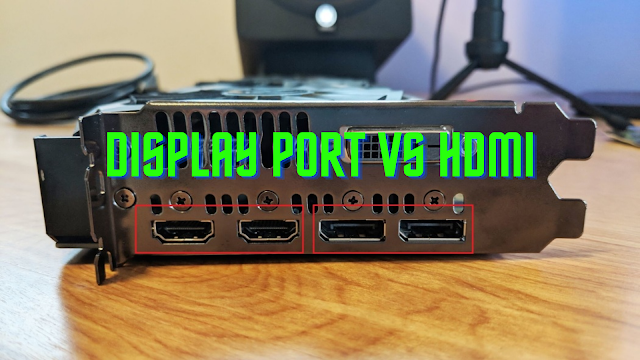
Display Port and HDMI both do much of the same things; they’re digital, high-definition methods of outputting sound and video from your computer to an external device such as a television or projector. However, despite the similar purposes, there are some major differences between Display Port and HDMI that you need to be aware of before deciding which one you’ll be using in your next project.
Know your ports
DisplayPort is not a proprietary technology like, say, Apple’s Lightning port or even FireWire (which was once used to connect computers to external drives and video cameras). Instead, DisplayPort is an open standard created by VESA, an industry group made up of tech companies like AMD, Dell, Intel and NVIDIA. As such, DisplayPort connectors are often found on PCs and laptops with high-resolution displays; they also appear on new monitors that can handle 4K resolution screens. As for whether it’s the same thing as HDMI: no. They both transmit digital audio/video over specialized cables—but they work differently enough that there aren’t always adapters available if you want to run an HDMI cable into a DisplayPort monitor.
The difference between HDMI and DP
HDMI technology has become increasingly popular in high-definition television (HDTV) sets and many people have come to refer to it simply as display port. The truth is that a single product called display port doesn’t exist. Rather, it refers to an industry standard for sending digital signals from one device to another. This includes audio/video components such as cable boxes, Blu-ray players, AV receivers and monitors along with personal computers (PCs). DisplayPort supports all of these devices with a single connector. If you want to send video from your computer to your TV, you’ll need both DVI or HDMI outputs on your computer and an HDMI input on your TV set; if you want video output on your PC as well as an audio signal, you will need both display ports available.
Differences between DisplayPort 1.2, 1.3 and 1.4
DisplayPort 1.2 supports 8K resolution (7680x4320 pixels), while DisplayPort 1.3 supports 8K resolution at 60 Hz, 4:2:0 color space, or 32 audio channels, including 5.1 surround sound. DisplayPort 1.4 meanwhile includes various other upgrades to support higher resolution video at a higher frame rate; 4Kp60 (3840x2160) resolutions with 10-bit color depth are now supported on DisplayPort 1.4 interfaces. DisplayPort also supports Multi-Stream Transport (MST) which allows multiple source devices to be connected simultaneously—this allows multiple monitors from different manufacturers to be driven from one DisplayPort connection on a computer’s GPU.
Choosing the right graphics card
What display port should I use? If you’re in doubt of which graphics card you should purchase, take a look at what kind of display port you have on your current monitor. You’ll need to make sure that whatever graphics card you buy has a compatible output for that display. If it doesn’t, then there’s no point in getting that particular card - because it will just not work.

Comments
Post a Comment